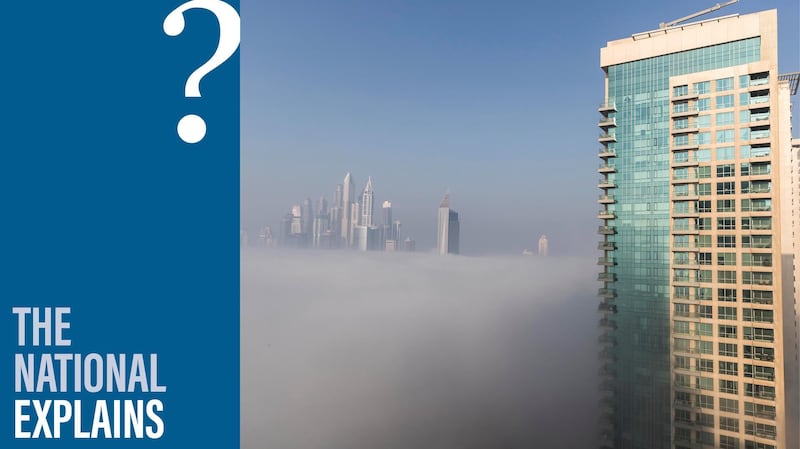The Emirates may be well known as a winter sun getaway, but for those living in the country year-round, the weather can prove a fickle friend.
From flash floods to dust devils, and from hazy orange skies to snow, the UAE boasts a surprising array of meteorological mishaps.
One phenomenon which occurs more often than most is the country’s fog - which at times feels never-ending.
It shrouds skyscrapers in a fluffy, white blanket and can make for some spectacular sunrise shots.
But at its worst it can also wreak havoc on the roads and lead to flight delays. But how do you even get fog in the desert?
In a fog
The UAE’s climate is - according to the Koppen climate classification system - BWh, which means it’s a hot desert with low rainfall. No surprises there then.
But what the UAE lacks in land-bound water, it makes up for in sea, and 95 per cent of the country’s fog is radiation fog.
This fog most commonly forms in the UAE between mid-December and the end of March, aided by clear skies and calm conditions.
The cooling of the Arabian Sea by thermal radiation overnight brings air temperatures close to the surface of the water down. This then reduces the air’s ability to hold moisture, allowing condensation to form and resulting in low cloud or fog.
But this fog is not just limited to coastal areas. Sometimes the same fog forms inland caused by temperature radiation from the land due to lower temperatures there during the late night and early morning. It can also take longer to lift.
A perfect storm
The ideal conditions for radiation fog are calm winds of around 5kph, as strong winds interfere with the water condensation.
Also needed is a clear atmosphere, especially during the night and early morning. As the surface of the earth cools the moist air immediately above it, fog is formed. And this is what the UAE is experiencing right now.
Under its own steam
The UAE has, according to the National Centre for Meteorology, “frequent fog”.
It averages 132 days of fog formation a year since records began in 2006, with the largest amount of January fog seen in 2010, when there were 17 days of fog and five days of mist.
The fog can be held back, however, by oil and salt particles in the air.
You won’t see me for dust
It seems counter-intuitive that you can have a day of thick fog followed by a sandstorm, but that’s just how the UAE weather system works. And which one you end up with often depends on the direction of the wind.
If there’s a solid flow of air coming from the south, perhaps from somewhere like the Empty Quarter, it can bring with it loose dust or sand. Wind may also cause a local eruption of dirt.
Stay safe
Fog and dust can make for treacherous driving conditions and there are accidents every year. Experts advise motorists to switch on their fog lights, switch off hazard lights, drive at a reasonable speed and be disciplined when moving between lanes.
The National's tips for driving safely in fog

_________________
Read more:
How to drive safely in the UAE fog
[ Eerie but beautiful: Our best pictures of the fog over the years ]







